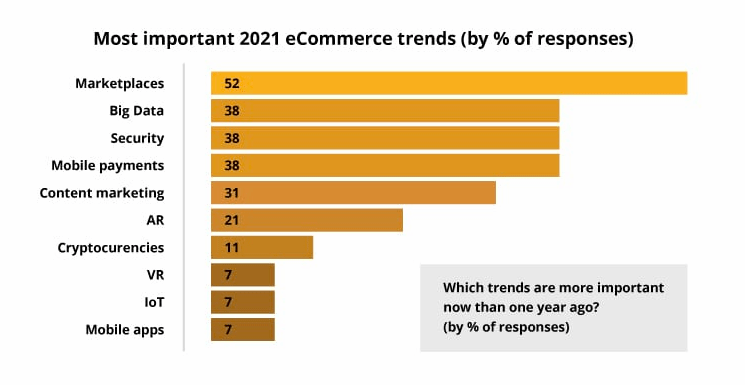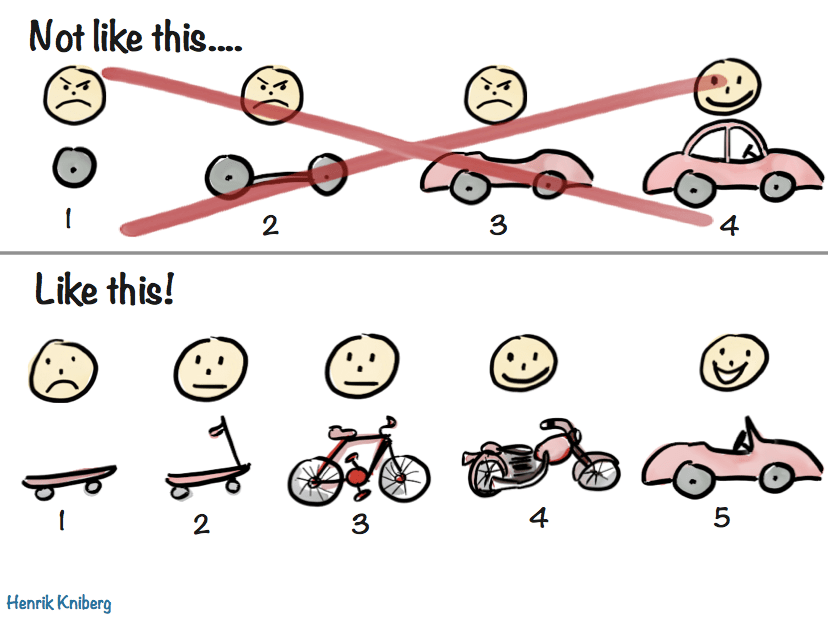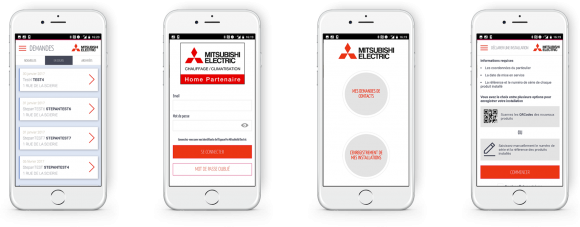In 2020, following the arrival of COVID 19, BtoB buyers and sellers have massively turned to digital. Today, we are certain that digitalization will continue to grow, but how will it evolve and towards which trends? In this unprecedented context, many people are wondering what will mark B2B e-commerce in 2021?
The health crisis has revealed many flaws in the sales processes of many companies, especially BtoB. They have been able to rectify them and take advantage of them to go further, accelerating their digital transformation, optimizing their online sales operations or redesigning their platform. This is also an opportunity for manufacturers and distributors to explore new sales methods.

Although the trends and analysis are encouraging, a lot of businesses struggle transforming an idea or a vision into a concrete roadmap, and transformation plan. One size does not fit all and different businesses with different contexts, objectives, levels of maturity cannot address the topic the same way. In this article we will try to provide leads, ideas, quick wins that B2B businesses can implement as a 1st step toward a broader transformation of their sales operations.

First, let’s start with a quick summary of the Risks and Benefits that companies should expect from B2B e-commerce initiatives:
Risks you face / foresee:
- Changing customers habits (and push them to order online rather than through a sales rep)
- Disrupt and worry sales staff with a new “direct” sales channel
- Duplicate functionalities of existing tools (i.e. CRM, OMS, ERP…)
- Invest in a project with unsure ROI
Value you should expect:
- Increase reach and availability to clients and prospects (Sales)
- Address customers through their preferred channels (CX & loyalty)
- Streamline internal processes (Cost savings)
- Enable analytics ( Get ready for the future)
The importance is to define a coherent vision for your business and put together a roadmap that emphasises on the main values for your business and cope with transformation risks identified. Below are a few examples of B2B businesses who addressed e-commerce through different angles based on their own context and objectives.
1) Master product information
Managing product information (offer) is key to any retailer or manufacturer, especially those who deal with large amounts of SKUs / complex products / configurable offers / strong norms & regulation… Completeness, quality and consistency of information is as important as the ability to navigate this information either by a sales representative or distributor presenting it or by a final customer in self-service mode.
Digitizing this offer and the processes around it is an interesting move for B2B businesses that can expect the following benefits from it;
- Facilitate enrichment of product information with rich descriptions (marketing, technical, legal/ norms, translation)
- Facilitate navigation through your offer, search, and recommendations for complementary products, substitutes, etc…
- Make product information available and consistent for different stakeholders / through different channels (sales staff, distributors, end customers / ecommerce, marketplace, mobile applications, print catalog, Marketing campaigns…)
- Appear in Search (if you expose your catalog online) ! Today 58% of B2B industrial manufacturer purchasers start online research according to Google ((3 insights that will help you serve today’s B2B buyer – Think with Google)).
- In some cases digitizing and centralising product information will also benefit other functions in the organization – i.e.: supply chain, customer service, technical support, etc…
One of our customer, a global specialist in electrical and digital building infrastructure decided to launch an online catalogue a few years ago.
Their business relies heavily on partners and distributors to sell their products and they did not want to manage themselves the complete sales chain. On the other hand, they wanted to offer a convenient access to their offer online. The objective was to present the product offering online through an e-commerce like platform without prices nor transaction capabilities. Multiple benefits came out of this:
- Their offer available, navigable and searchable online by customers, sales rep and distributors
- Product catalog (information and digital assets) can be re-used easily by its distributors / partners for their own channels (sales rep app, e-commerce, marketplace, etc…)
- Support and optimise management of specific assortments for large accounts
Petra Industries, a US based wholesaler of consumer electronics decided to modernise its product information management process with a PIM. The main reasons for that was to enable their clients (retailers) with consistent and accurate product information, and reduce time to market from weeks to days. ((https://www.digitalcommerce360.com/2019/02/20/facing-pressure-from-retailers-distributor-fixed-product-data/))
2) Enable self-service
B2B customers need to access to a number of simple information from their supplier. Whether it is an order status, technical documentation, or invoices, those information are crucial and often shared in 1 to 1 communication between a customer and his sales representative. A simple B2B portal could facilitate the access to this information for customers, and saving time for Sales representative to focus on more added-value activities.
Access & Manage information:
- Account details management: delivery addresses, invoicing addresses, points of contact, contact details, payment method preferences…
- Order information: order status, order history, invoices, pending payments…
- Other information: product specifications, technical documentation, tutorial and user guides…
Building a customer portal is a good starting point to educate customers at using digital platforms when interacting with you as a supplier. It allows B2B businesses to offer convenience and instantaneity to the relationship without necessarily removing the human touch when dealing with orders, negotiations, etc. As customers get familiar with the technology, B2B businesses can develop the functionalities of their portal to offer more services online (training, tutorial, quotations, etc…) and eventually push customers to order online.
Mitsubishi Electric is a leading worldwide manufacturer of electrical and electronic products including air conditioning, heat pumps, solar panels, etc… In order to facilitate daily life of their partners / installers who are strong prescriptors of their products, Mitsubishi set-up a number of digital platforms and services:
- An online portal where installers and partners can manage their accounts, access to product information and technical documentation as needed.
- A quotation module that is not only available through ME portal but also through its partners / distributors portals as a white label service. This way ME supports and enables its partners with a “white label”quotation engine but also let them get access to customer information requesting for a quote.
- Last but not least, Mitsubishi electric developed a Progressive Web Application to allow installers to register ME products on the go when installing them.
Today ME portal in France serves 9,000 users daily and provide hundreds of quotations every month.

Univar is a global distributor of chemical products. They developed MyUnivar.com, a self-service portal allowing their customers to access information, place orders and download documents (safety data sheet, etc) directly online and without consulting a sales representative during business hours. Following the launch of MyUnivar.com, they have seen an increasing number of orders placed outside of standard business hours. A stronger digital commerce operation and more effective sales force has helped Univar improve financial results in the past year (both in revenue and profitability). ((https://www.digitalcommerce360.com/2018/07/30/chemicals-distributor-univar-mixes-well-with-digital-commerce/)).
Support sales representative
B2B e-commerce can be implemented as an extension of the CRM functionalities. In addition to customer information, the B2B e-commerce will provide sales with an interface that they can use on behalf of customers (if those are not mature to use it themselves) or that customers can use directly, without compromising relationships with their dedicated sales.
This approach is working well for our client Alliance Marine, leader in the distribution of equipment for the marine sector. Their challenge was to provide visibility to customers of their full offer – 500 brands coming from different Business Units (historical acquisitions). In this case the B2B e-commerce have been set-up as a tool to facilitate operations and transactions with customers. The relationship remains with the sales representatives who will support clients in a more strategic way on large deals, price negotiation, services, presentation of new offer / innovation, suggest ideas, etc… but the purchasing process aimed at being automated through the e-commerce.
Orders can be made by clients directly through the portal or requests can be sent via e-mail / phone call to sales representative who will use the ecom to place the order on behalf of the customer.
The e-commerce platform is also used by sales rep to present products to customers on a tablet (without prices).
Other benefits that came out of this initiative are:
- Less errors on orders
- Stricter rules in the sales / negotiation process
- …
Other customers like Top Tex are deploying their e-commerce platform as a white label service for their distributors who didn’t have any, empowering them on a new digital channel, with the advantage of having access to end customer information.
Coca-Cola is not a client but a large adopter of B2B e-commerce to support demand & lead generation and reduce acquisition costs of customer. They estimated that the cost of acquisition of a customer by a sales representative range between 50 to 80 $ Versus 3$ from their e-commerce. ((https://www.digitalcommerce360.com/2018/06/08/coca-cola-makes-e-commerce-work-sales-reps/))
Expand offer through a Marketplace
The Marketplace approach is usually more relevant to companies that are either already quite advanced in their digital transformation or have a big ambition to disrupt their current model. Our partner Mirakl((https://www.mirakl.com/)) whom build and edit a software platforms enabling Marketplaces identified 3 main types of business model changes that internal Marketplaces can trigger.
Range extension: Complement your current offer with new products and services. This allow companies to offer a “one stop shop” to their clients, offering a broader offer yet minimising inventory and logistics.
MRO Aftermarket: Manufacturer or wholesaler of large and complex products (i.e. aircraft, trains, etc…) whom relies on a number of partners and intermediaries to offer post-sale products and services (spare parts, maintenance, etc). Setting-up a Marketplace helped some of these companies provide their clients with an holistic view after sales partners, along with stock level for particular spare parts held by each of them.
Distributor platform: Manufacturer selling directly online by connecting its distribution network through a Marketplace. It helps manufacturer regain control of channels, build direct customer relationship, and redefine position in the value chain. This type of strategy is particularly relevant for companies with a strong brand, and where end customer are usually looking for the brand rather than the distributor.
One of our client is the B2B division of a major beer brand, distributing beverages to bar hotels and restaurants. They supply 54,000 customers in France (~¼ of all cafes, hotels and restaurants) through 73 distribution centres.
This client have been operating successfully its B2B e-commerce platform, and recently decided to expand it with its Marketplace in order to accelerate its digital transformation and respond to customer needs in terms of offer and engagement – Range extension type of model:
- Extend its product offer with 3rd party products
- Facilitate customer engagement through a single digital platform
- Acquire new customers and increase loyalty
- Ultimately increasing revenue per customer
With limited operations around it (inventory and logistics) and short time to market, Marketplaces provide a great platform to test new offers to customers.
Conclusion
There are many opportunities for B2B players to address their customers with 100% digital or digitally enhanced experiences. Having a clear picture of your business, constraints, stakeholders involved in the process will help you find the right way of addressing your transformation and define a relevant roadmap focused on value.
A “program” approach organised into streams of project with a global governance and a 3 years plan helps set-up this overall vision and foster consistency across initiatives yet giving flexibility to adjust to changes.
For more Readings on B2B e-commerce:




